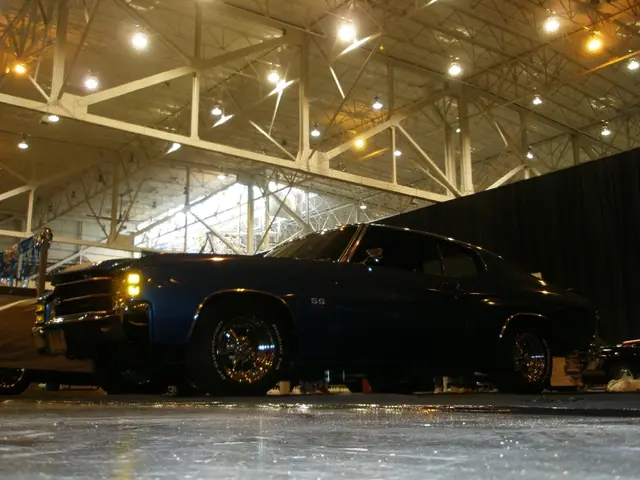Unintentional Sounds Transformed into Artistic Noises
The Lexus LC, a testament to luxury and performance, boasts a unique engine sound that sets it apart from its peers. The sound's development was a meticulous process, blending heritage, innovation, and regulatory compliance to deliver an authentic, sporty, and luxurious driving experience.
At the heart of this auditory masterpiece is the adoption of the engine sound design philosophy from the legendary Lexus LFA. Toyota aimed to embed a similar character into the LC’s engine audio, preserving the aggressive and sporty tone that enthusiasts associate with the brand's performance heritage.
For the Lexus LC 300 variant, Toyota developed an advanced electronic sound system called ENGINEVOX. This system finely controls engine sound reproduction within the cabin, eliminating sound distortion and creating a maximum realistic and immersive engine sound experience.
Balancing noise regulations with driver experience was a priority. By using a combination of physical exhaust tuning and electronic sound manipulation, Toyota ensures the LC complies with strict noise standards without compromising on the sporty, engaging inside-the-cabin sound. This approach allows the engine sound to be loud and immediate from the driver's perspective but controlled externally.
The naturally aspirated V8 in the LC 500 (2UR-GSE engine) offers a highly-strung, immediate, and sonorous engine note, a trait inherited from Lexus’s tradition of performance engines. This engine sound is a fundamental aspect of the LC 500’s driving experience and ties back to the company's performance DNA.
In the LC Convertible, error microphones were strategically placed in the headrests due to the convertible's roof being open. These microphones are used in active noise control, with speakers emitting sounds to counter noises and make them inaudible. Antiphase sounds are used to achieve this, with speakers emitting sounds that are 180 degrees out of phase with the unwanted noises.
The LC Convertible harmonizes quietness and dynamism, allowing drivers to hear the roar of the 5L naturally aspirated V8 engine. The sound carries the DNA of the LFA, with its soul-stirring voice speaking for itself. The LFA's engine sound, described as enchanting and giving goosebumps, was sought by the LC's chief engineer, Koji Sato, who was committed to the engine sound and wanted to create an LC sound that inherited the LFA's DNA.
To achieve a genuine Lexus sound without resorting to any electronic devices, the exhaust sound was adopted from the LFA, borrowing a technology that controls tone and acoustic pressure by using valves to change flow paths in the exhaust piping. The intake sounds captured by a generator are combined with the exhaust sounds to fill the LC's interior with high-frequency harmonies.
In summary, Toyota’s development strategy for the Lexus LC's engine sound is a sophisticated blend of heritage-inspired acoustic tuning from the LFA, innovative electronic sound enhancement technology, and careful attention to regulatory compliance, all to deliver an authentic, sporty, and luxurious driving ambiance.
- The adoption of the engine sound design philosophy from the Lexus LFA, along with the use of advanced electronic sound systems like ENGINEVOX, illustrates how the Lexus LC embraces technology in its quest for a unique and engaging engine sound within both the industry of automotive manufacturing and the realm of finance.
- Balancing out the need for noise regulations with maintaining a dynamic and engaging driving experience, Toyota engineered the Lexus LC to produce a loud and immediate engine sound within the cabin for the driver, while still complying with industry standards for transportation noise regulations, thereby merging technology and heritage to provide an immersive driving experience.




